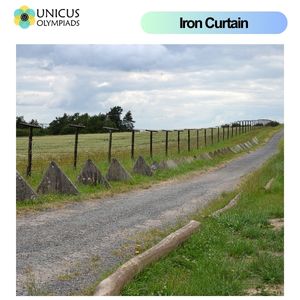

The Iron Curtain was a political, military, and ideological barrier that divided Europe into two opposing blocs during the Cold War, from the end of World War II in 1945 until the collapse of the Soviet Union in 1991. The term "Iron Curtain" symbolized the division between the communist-controlled Eastern Bloc, led by the Soviet Union, and the capitalist Western Bloc, led by the United States and its NATO allies. In this article, we will explore the background, causes, key events, and socio-political, economic, and cultural impact of the Iron Curtain on Europe and the world.
Following the end of World War II in 1945, Europe was left devastated, with much of its infrastructure, economy, and political systems in ruins. The victorious Allies—mainly the United States, the Soviet Union, and the United Kingdom—held conferences to determine the post-war settlement and the future of Europe. At the Yalta and Potsdam Conferences, tensions began to emerge between the Western powers and the Soviet Union over how to rebuild Europe and the future political systems of the liberated countries.

The key event leading to the creation of the Iron Curtain was the division of Germany. After WWII, Germany was split into four occupation zones, each controlled by one of the four Allied powers: the United States, the United Kingdom, France, and the Soviet Union. The capital city, Berlin, which was located in the Soviet-controlled eastern zone, was also divided into four sectors. Over time, tensions between the Soviet Union and the Western Allies grew, particularly over the political and economic direction of Germany.
The fundamental cause of the division was the conflicting ideologies of communism and capitalism. The Soviet Union, under Joseph Stalin, imposed a totalitarian communist system on the countries of Eastern Europe, while the United States and its Western allies promoted democratic capitalist systems. These ideological differences led to increasing mistrust and rivalry between the two sides, setting the stage for the Cold War.
The term “Iron Curtain” was popularized by British Prime Minister Winston Churchill in his famous speech in 1946 in Fulton, Missouri, where he described the division of Europe and the growing power of the Soviet Union in Eastern Europe. Churchill used the term to describe the political and military barrier that separated the Eastern Bloc from the West.
The Cold War was marked by a series of proxy conflicts where the United States and the Soviet Union supported opposing sides. These conflicts were seen as indirect confrontations, often fought in regions far from Europe but deeply influenced by the ideological divide. Examples include:
The Iron Curtain had significant socio-cultural implications, as it not only divided Europe geographically but also deeply influenced the lives and identities of people living on both sides of the divide.
The economic systems in the East and West were starkly different, with capitalism thriving in the West and state-controlled socialism in the East.
The political and military implications of the Iron Curtain were immense, as it shaped global alliances, military strategies, and the balance of power during the Cold War.
The Iron Curtain began to collapse in the late 1980s as a result of various factors:
The Iron Curtain was a powerful symbol of the ideological, political, and military division between the capitalist West and the communist East during the Cold War. It had a profound impact on Europe’s political landscape, shaping the lives of millions of people and contributing to global tensions. The fall of the Iron Curtain in 1989 and the dissolution of the Soviet Union in 1991 marked the end of an era, bringing about the reunification of Germany and the expansion of democracy and capitalism throughout Eastern Europe. Today, the legacy of the Iron Curtain serves as a reminder of the importance of diplomacy, cooperation, and the ongoing struggle for peace and freedom in the world.